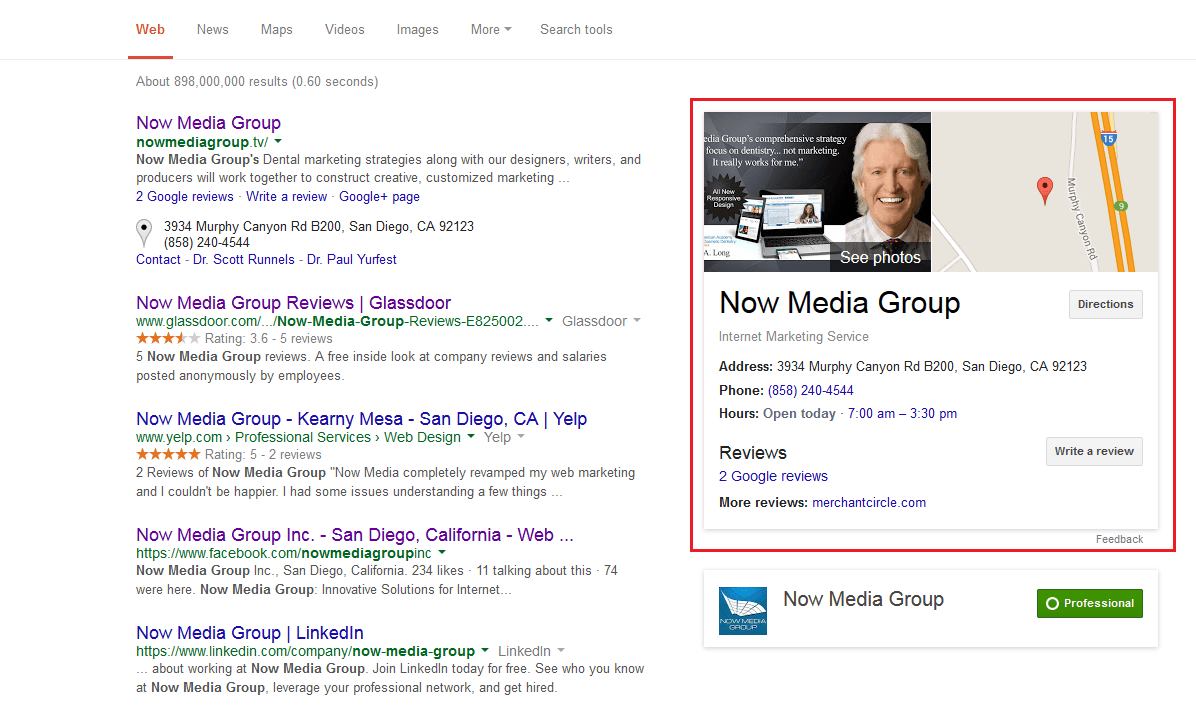Google has built a name for itself as the gold standard of search engine technology by continuously improving on their products. Arguably, they are the web company that has best aligned results and customer needs, which is why they have consistently controlled over 80 percent of the total search market in the U.S. for over six years. True to their innovative nature, Google has introduced a number of new features, mostly improvements to existing products and tools. Keeping track of all these changes can be time-consuming, so here are five the Now Media Group team thinks you should know about.
1. Updated Structured Data Tool (Wonkish)
Structured data refers to markups — snippets of HTML or JavaScript — that explicitly define relationships between data on your website. In English: one thing structured data helps with is explicitly define certain elements on your webpage. With these snippets you can, for example, tell Google and other search engines exactly what your company’s name is, what your company’s phone number is, and where your company’s physical location is at. It eliminates any possibility for ambiguity by precisely defining what those elements are.
Google has for a long time provided a testing tool to help webmasters mark up their websites with structured data. Well, they’ve just made updates to it, to help web developers better understand how Google interprets content on a webpage and how these developers should organize their structured data. What does this update offer?
- An easier validation system, so you know for certain whether your structured data is complete.
- Support for JSON-LD syntax, including when used in dynamic HTML This lets you define company logos, contacts, social profile links, upcoming events, and a host of other information.
- Documentation updates, to make it clearer to webmasters how structured data should be written and organized.
In a nutshell, this improved tool allows you to provide Google and other search engines with a more accurate idea of what your website is about and what kind of searchers will find your website useful.
2. Knowledge Graph Improvements

Sometimes when you complete a Google search, you see a box on the right-side of the screen. This is known as a “Knowledge Graph,” which provides information on what’s being searched. The information is taken from a variety of sources, including Google Plus, your website, and third party websites such as Wikipedia. Now the knowledge graph has been updated to show upcoming events and links to social media websites that aren’t Google+, including Facebook, Twitter, Instagram, and Tumblr.
3. Introducing Google’s Domain Registration Service
You’ve probably heard of GoDaddy, a leading domain registration provider. Well, move over GoDaddy, because Google is joining the domain registration market too. For $12 a year, you can purchase an open .com domain, but for a little extra ($30–50/yr.) you can get yourself a .academy, a .company, or even a .ninja. For $110, you can even get a .haus domain (if you’re a German realtor or construction company). What benefits come with this service? They include:
- Whois privacy, which replaces potentially private information with a forwarding service.
- Domain forwarding, so traffic that visits a particular domain name can be forwarded to the actual website.
- Email forwarding, so you can have all your email forwarded to the main email you check on a daily basis.
- Support from a help center, via email, chat, or phone (and, yes, Google customer service has improved dramatically since even six months ago).
4. Google News Now Crawls and Indexes Offsite Images
If you’re a news publisher, it used to be that Google News would only crawl and index images used in your articles if they were hosted by your domain. Any images hosted on an offsite domain were ignored. The algorithm has been updated so that it will now crawl and index images used in your news articles, regardless of where that image is hosted.
Google has also launched their Google News Publisher Center, from which you can verify ownership of your news site, and control the details on your website — is it a blog, satire, or opinion? Other features to this new Publisher Center include the ability to suggest five articles as Editors’ Picks and an easier method of troubleshooting crawl errors.
5. Google Maps Update
In an effort to help local businesses, Google has updated Google Maps to allow business owners to claim their listings page, to more directly manage the displayed information. For Google Maps users, the update now allows searchers to drop pins for starting and destination points; users can also now share directions with their contacts. For restaurant connoisseurs, the new Google Maps app will also let you filter restaurant searches by cuisine type, making it easier to find the type of food you want.
Bottom line: these updates are designed to make the Google Maps information more accurate and more accessible, while making it easier for users to find directions to the places they want to go.
What do you think about these Google updates? Leave a comment below or let Google know directly.
